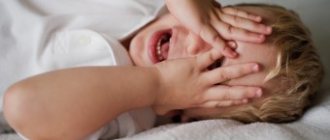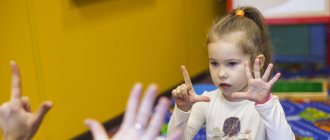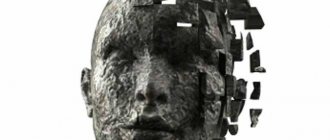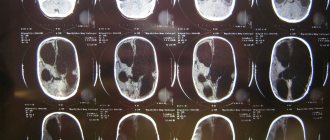Autism spectrum disorders (ASD) are a range of related human developmental disorders that begin in childhood and persist throughout adult life.
ASD can cause a wide range of symptoms, grouped into three broad categories:
- Problems and difficulties with social interaction, such as a lack of understanding and recognition of other people's emotions and feelings.
- Impaired language and communication skills, such as delayed language development and the inability to initiate or participate in conversations properly.
- Unusual patterns of thinking and physical behavior . This involves repetitive physical movements such as tapping with the hands. The child develops certain behavioral habits that can upset him if these habits are disrupted.
There is currently no cure for the disease, but there are a number of treatments available to improve the symptoms listed above.
Social interaction disorders
Impaired social interaction is the most important symptom of autism. Often a small child with autism behaves as if he is tuned in to his own wavelength; he may not show interest in the games of other children and even stubbornly refuse to participate in common games; it can be difficult to interest him in something that an adult offers him, he does not repeat the actions, movements and sounds of adults.
- The child may not notice whether parents are at home or at work, whether they have gone somewhere or returned home
- May become upset when an adult tries to join in his games
- Can sit alone in the crib and scream loudly, monotonously, instead of calling mom
- May not show interest in other children's games
- May not show interest in playing hide and seek and other games that involve interacting with other people
- It is often difficult to attract his attention to toys or books
- Doesn't smile back when you smile
- Doesn't respond to his name
- May clearly and desperately resist hugs, kisses and not allow himself to be picked up by either his parents or other people
Communication violations
Communication disorders are also a leading symptom of autism. Many children with autism begin to speak much later than others and may not use gestures.
Instead, they use other people's hands, lead adults to objects they want to interact with, or point at them with their mother's hand.
Other children may begin to speak early and remember many words, but do not use them to communicate.
For example, they repeat favorite quotes from cartoons and books or words and phrases heard from others over and over again. Often children with autism understand speech addressed to them less well. Often they also begin to follow instructions later than other children; it may seem that they do not hear the words addressed to them.
So, the most striking symptoms in the field of communication that are worth paying attention to:
- Avoid eye-to-eye contact
- Automatically repeat words not addressed to others (echolalia)
- Use an adult's "guided hand"
Behavioral disorders
The third group of symptoms required for a diagnosis of ASD is originality, limitedness and stereotyping of behavior, games and interests. Many children with autism play with toys in unusual ways (such as lining them up or throwing them around), may engage in frequent repetitive actions, become interested in unusual objects, or move in strange ways, such as flapping their arms, rocking in place, or running in circles. The manifestation of symptoms in this group is very diverse.
- Looking at objects (fan blades, air conditioners). The observer has the feeling that the child is “stuck with his gaze” and cannot tear himself away
- May have no interest in toys and may admire ordinary objects, such as a heater
- May not play with toys in the usual way, but is extremely interested in some part of the toy (for example, likes to spin a wheel on a car)
- The child may often spin around his own axis
- Frequently waves his arms repeatedly
- Arranging toys in a row; the creation of a series is valuable in itself, no plot can be traced
- Can spin objects, bringing them very close to the face
- May persistently try to eat inedible objects: clothes, sheets, mattress, curtains
- May fiddle, shake, or snap fingers in front of his eyes frequently or for long periods of time
- Rock often and for a long time, sitting still and doing nothing else
- Flick the switch endlessly, turning the lights on and off
Autism spectrum disorders in children
home
Articles
Diseases
Alpatsky Dmitry Alexandrovich
Neurologist, epileptologist, EEG doctor
07.12.2015
Often mothers come to the doctor with complaints about delayed speech development in their child. But in some children, with a close look, a specialist, in addition to this, sees features of the child’s behavior that differ from the norm and are alarming
.
Let's look at a clinical example:
Boy S. Age 2 years 9 months. According to the mother, the child’s vocabulary is no more than 20 individual words consisting of two or three syllables. There are no phrases. The mother says that the child often has hysterics, is restless, and has difficulty falling asleep. The child's mother has no other complaints. During the examination, the doctor notices that the child does not look into the eyes, is constantly in motion, reacts by screaming if he is not given something or is forbidden. You can calm your child down only by giving him a mobile phone or tablet. Shows interest not in children's toys, but more in shiny pieces of furniture and interior design. Starting to play something, he quickly loses interest and switches to something else. Questioning the mother, it turns out that the child is very selective in food. Not potty trained, defecates only in a diaper while standing. Has difficulty falling asleep and waking up during sleep. The child underwent electroencephalography and consultations with a clinical psychologist and speech therapist. Based on the diagnostic results and clinical picture, a diagnosis of autism spectrum disorder was made.
Autism spectrum disorders (ASD) are complex mental development disorders that are characterized by social maladjustment and inability to social interaction, communication and stereotypical behavior (multiple repetitions of monotonous actions).
Back in the middle of the last century, autism was a fairly rare disease. But over time, more and more children began to appear suffering from this disorder. Statistics show that the incidence of ASD in children over the past 30-40 years in countries where such statistics are carried out has risen from 4-5 people per 10 thousand children to 50-116 cases per 10 thousand children. However, boys are more susceptible to this disease than girls (ratio approximately 4:1).
Causes of ASD.
Throughout the world, to this day, scientists studying the causes of autism have not come to a consensus. Many assumptions have been made. Among the possible factors for the appearance of this disorder in children, some hypotheses are mentioned:
- hypothesis about genetic predisposition
- a hypothesis based on disorders of the development of the nervous system (autism is considered as a disease caused by disorders of brain development in the early stages of a child’s growth).
— hypotheses about the influence of external factors: infections, chemical effects on the mother’s body during pregnancy, birth injuries, congenital metabolic disorders, the influence of certain medications, industrial toxins.
But whether these factors can really lead to the appearance of autism in children has not yet been clarified.
Features of mental development of children with ASD.
To understand and recognize the presence of autism in a child, parents need to carefully monitor the child’s behavior and notice unusual signs that are not typical for the age norm. Most often, these signs can be identified in children under 3 years of age.
Childhood autism is considered as a developmental disorder that affects all areas of the child’s psyche: intellectual, emotional, sensitivity, motor sphere, attention, thinking, memory, speech.
Speech development disorders
: At an early age, absent or weak humming and babbling may be noted. After a year, it becomes noticeable that the child does not use speech to communicate with adults, does not respond to names, and does not follow verbal instructions. By the age of 2, children have a very small vocabulary. By the age of 3, they cannot form phrases or sentences. At the same time, children often stereotypically repeat words (often incomprehensible to others) in the form of an echo. Some children experience a lack of speech development. For others, speech continues to develop, but there are still communication impairments. Children do not use pronouns, addresses, or talk about themselves in the third person. In some cases, regression of previously acquired speech skills is noted.
Difficulties in communication and lack of emotional contact with others:
Such children avoid tactile contact, visual contact is almost completely absent, there are inadequate facial reactions and difficulties in using gestures. Children most often do not smile, do not reach out to their parents, and resist attempts to be picked up by adults. Children with autism lack the ability to express their emotions, as well as recognize them in others. There is a lack of empathy for other people. The child and the adult do not focus on one activity. Children with autism do not make contact with other children or avoid it, they find it difficult to cooperate with other children, and most often they tend to withdraw (difficulties in adapting to the environment).
Violation of research behavior:
children are not attracted by the novelty of the situation, are not interested in the environment, and are not interested in toys. Therefore, children with autism most often use toys in an unusual way; for example, a child may not roll the entire car, but spend hours monotonously spinning one of its wheels. Or not understanding the purpose of the toy to use it for other purposes.
Eating disorders
: a child with autism can be extremely selective in the foods offered; food can cause disgust and danger in the child; often children begin to sniff the food. But at the same time, children may try to eat an inedible thing.
Violation of self-preservation behavior:
Due to a large number of fears, the child often finds himself in a situation that is dangerous for himself. The cause can be any external stimulus that causes an inadequate reaction in the child. For example, a sudden noise may cause a child to run in a random direction. Another reason is ignoring real threats to life: a child can climb very high, play with sharp objects, or run across the road without looking.
Motor development disorder:
As soon as the child begins to walk, awkwardness is noted. Also, some children with autism are characterized by walking on their toes, and there is a very noticeable lack of coordination of arms and legs. It is very difficult for such children to teach everyday actions; imitation is quite difficult for them. Instead, they develop stereotypical movements (performing monotonous actions for a long time, running in circles, swinging, flapping “like wings” and circular movements with their hands), as well as stereotypical manipulations with objects (sorting through small parts, lining them up in a row). Children with autism have significant difficulty mastering self-care skills. Motor clumsiness is pronounced.
Perception disorders:
difficulties in orientation in space, fragmentation in the perception of the environment, distortion of the holistic picture of the objective world.
Difficulty concentrating:
Children have difficulty focusing attention on one thing; there is high impulsiveness and restlessness.
Bad memory:
Often, parents and specialists notice that children with autism are good at remembering what is meaningful to them (this can cause them pleasure or fear). Such children remember their fright for a long time, even if it happened a long time ago.
Features of thinking:
Experts note difficulties in voluntary learning. Also, children with autism do not focus on understanding the cause-and-effect relationships in what is happening, there are difficulties in transferring acquired skills to a new situation, and concrete thinking. It is difficult for a child to understand the sequence of events and the logic of another person.
Behavioral problems:
negativism (refusal to listen to an adult’s instructions, perform joint activities with him, leaving a learning situation). Often accompanied by resistance, screaming, and aggressive outbursts. A huge problem is the fears of such children. They are usually incomprehensible to others because children often cannot explain them. A child may be frightened by sharp sounds or certain actions. Another behavioral disorder is aggression. Any disorder, violation of a stereotype, interference of the outside world in a child’s life can provoke aggressive (hysteria or physical attack) and auto-aggressive outbursts (damage to oneself).
Each case of the disease is very individual: autism may have most of the listed signs in an extreme degree of manifestation, or may manifest itself only in some barely noticeable features.
Diagnosis of autism spectrum disorders
To diagnose autism, experts use the criteria of 2 international classifications: ICD-10 and DSM-5.
But the main three criteria (“triad” of violations) that can be identified are:
- violation of social adaptation
- communication disorders
- stereotypical behavior
The main diagnostic stages include:
- examination of the child by a psychiatrist, neurologist, psychologist
- observing the child and completing the Autism Rating Scale, which can be used to determine the severity of the disorder
- conversation with parents
— parents filling out questionnaires – “Questionnaire for diagnosing autism”
Types of ASD
There are several current classifications of ASD, and the division often occurs according to completely different criteria, which, naturally, can bring some inconvenience to a person who initially has little knowledge of medicine or psychology; therefore, the most basic and frequently encountered types of ASD in practice will be highlighted below: - Kanner syndrome (Early childhood autism) - characterized by a “triad” of main disorders: difficulty establishing contacts with the outside world, stereotypic behavior, as well as delay or impairment of communicative functions of speech development . It is also necessary to note the condition for the early appearance of these symptoms (up to about 2.5 years)
It manifests itself in children in 4 forms, depending on the degree of isolation from the outside world:
Complete detachment from what is happening. This group is characterized by a lack of speech and the inability to organize the child (make eye contact, ensure that instructions and assignments are followed). When trying to interact with the child, he demonstrates the greatest discomfort and disruption of activity.
Active rejection. Characterized by more active contact with the environment than the first group. There is no such detachment, but there is a rejection of a part of the world that is unacceptable to the child. The child exhibits selective behavior (in communicating with people, in food, in clothing)
Preoccupation with autistic interests. It is characterized by the formation of overvalued preferences (for years a child can talk on the same topic, draw the same plot). The gaze of such children is directed at the person’s face, but they look “through” this person. Such children enjoy the stereotypical reproduction of individual impressions.
Extreme difficulty in organizing communication and interaction. Autism in its mildest form. Children are characterized by increased vulnerability; contact with the world ceases at the slightest sensation of obstacles. You can make eye contact with these children
— Asperger's syndrome. Formed from birth. Children have an early onset of speech development, a rich vocabulary, developed logical thinking, and no impairments in mental development. But at the same time, the communicative side of speech suffers: such children do not know how to establish contact with other people, do not listen to them, can talk to themselves, do not keep a distance in communication, and do not know how to empathize with other people.
- Rett syndrome. Its peculiarity lies in the fact that the development of a child up to 1-1.5 years proceeds normally, but then the newly acquired speech, motor and subject-role skills begin to disintegrate. This condition is characterized by stereotypical, monotonous movements of the hands, rubbing and wringing of the hands, which are not of a purposeful nature. The rarest of the diseases presented, almost always occurring only in girls.
- Childhood psychosis. The first manifestations of symptoms are before 3 years of age. Characterized by disturbances in social behavior and communication disorders. There are stereotypies in behavior (children run monotonously in circles, sway while standing and sitting, move their fingers, shake their hands). Such children have eating disorders: they can swallow food without chewing. Their unclear speech can sometimes be an incoherent set of words. There are times when children freeze in place, like dolls.
- Atypical autism. It differs from autism in its age-related manifestation and the absence of one criterion from the “triad” of basic disorders.
Correction of patients with ASD
One of the most important sections of habilitation for children with ASD is undoubtedly the provision of psychocorrectional and social rehabilitation assistance, with the formation of social interaction and adaptation skills. Comprehensive psychocorrectional work, which includes all sections and types of rehabilitation assistance, which will be described below, is, along with drug therapy, an effective means of relieving the negative symptoms of ASD, and also contributes to the normal inclusion of the child in society. Types of ASD correction:
1) Psychological correction is the most common and well-known type; characterized by a fairly wide range of techniques, of which the TEACCH and ABA therapy programs are the most widespread and recognized in the world.
The first program is based on the following principles:
— The characteristics of each individual child are interpreted based on observations of him, and not from theoretical concepts;
— increasing adaptation is carried out both by teaching new skills and by adapting existing ones to the environment;
— creation of an individual education program for each child; use of structured learning; holistic approach to intervention.
The second program relies heavily on learning that depends on the consequences that arise after the behavior. Consequences can be in the form of punishment or reward. In this model, it is necessary to highlight the main methods, such as the procedure for creating a contour and reinforcing behavior similar to the target; method of teaching chains of behavior; method of teaching stimulus discrimination.
2) Neuropsychological correction - this type includes a set of classes consisting of stretching, breathing, oculomotor, facial and other exercises for the development of the communicative and cognitive sphere, and the classes themselves differ markedly in time and quantity.
3) Working with the child’s family and environment - first of all, this type of correction is aimed at mitigating emotional tension and anxiety among family members, since often parents of children with ASD also need help, including psychotherapeutic support and training programs (such programs are aimed mainly at developing a sense of understanding of the problem, the reality of its solution and the meaningfulness of behavior in the current family situation).
4) Psychosocial therapy - in fact, work with the child himself on the formation of cognitive, emotional and motivational-volitional resources of the individual for the possibility of further social adaptation, the need for which becomes more and more apparent as the child with ASD grows up.
5) Speech therapy correction - given the fact that impaired speech development is one of the cardinal manifestations of ASD, this type of work with the child will be an integral part of the correction program. It is characterized by a focus on the formation of vocabulary, the development of auditory attention, as well as phonetic and speech hearing.
6) Drug correction of ASD. Some forms of autism require medication for the child. For example, to improve concentration and perseverance, a doctor may prescribe vitamins and nootropic medications that improve thinking processes and stimulate speech development. And with high impulsiveness, aggression, negativism, and pronounced signs of “withdrawal,” psychotropic drugs can help. In some cases, Autism is combined with epileptic seizures. In such cases, drugs to prevent attacks are needed. Many mothers are afraid of medications. But medications are prescribed for a certain period, and not forever. Adverse events from medications are rare. And the result of the effect in most cases is worth the courage of the parents. In each case, it is necessary to individually decide what kind of therapy is needed. And the doctor must be able to clearly explain to parents all questions regarding medications.
The Children's Diagnostic Center in Domodedovo has all the capabilities for diagnosing autism spectrum disorders. Such as: examination by a pediatric neurologist, clinical psychologist, speech therapist, examination - electroencephalography and video EEG monitoring. As well as correction techniques, such as ABA therapy.
Alpatsky D.A. (chief physician, neurologist of the Children's Children's Center), Litvinova E.V. (psychologist DDC)
- Share
Applied Behavior Analysis (ABA)
Surgery to remove adenoids is not a tragedy
Return to list
Motor disorders
Motor skills are not the leading diagnostic criteria when diagnosing autism. But many parents and specialists note various variants of uneven motor skills in children with ASD. Some children may simultaneously demonstrate excellent body control in one area and be very awkward in another.
- Impaired judgment of distance to an object can also lead to motor clumsiness
- Walking on tiptoes
- Poor motor coordination – learning to walk up and down stairs can be very difficult for a child with autism
- Often the child cannot grasp and hold small objects with his hands
- Cannot ride a bicycle or pedal car
- Amazing ability to maintain balance and at the same time noticeable clumsiness
- Increased drooling may occur due to problems regulating the tone of the mouth and jaw muscles
Diagnosis of ASD
Unfortunately, there are no laboratory tests (such as blood tests) that can diagnose ASD.
Most often, a parent/guardian or someone close to you will notice some signs. If the child's parent/carer or healthcare professional is concerned, the child will likely be referred for assessment by a specialist.
A specialist (such as a neurologist, pediatrician, psychiatrist, or psychologist) will make a diagnosis.
Other health care providers who specialize in caring for children with developmental disabilities, including therapists, occupational therapists, and speech therapists, will conduct tests to determine whether the teen needs special services.
Peculiarities of perception - heightened sensitivity
Children with autism can be very sensitive and have difficulty tolerating certain sensations: noise, music, flashing lights, the touch of clothing, smells, etc., that others find quite comfortable in intensity.
Hypersensitivity can manifest itself in all types of sensations, but sometimes concerns only certain stimuli. For this reason, children with autism may have a very difficult time in new situations or environments. The more varied stimuli there are, the more likely it is that the child will not cope with such a load and will lose control of himself.
- May show aversion to anything new or rare, such as candles on a birthday cake or balloons
- The child may be intolerant to touching the skin (resist being undressed or washed)
- May not tolerate touching the scalp and hair that is inevitable when cutting and washing hair
- May not tolerate music
- May appear deaf at times and not startle or turn around at loud noises, but at other times respond to normal or mild auditory stimuli
- May not tolerate common household odors, especially household chemicals
- May refuse to change clothes or put on any clothing except a few specific items
- May refuse seat belts in a child car seat
Self harm
In some cases, the desire for unusual sensations or reduced sensitivity to pain can lead to the child injuring himself and causing harm. This behavior is not very common, but the harm can be serious.
- May tear out his own hair in clumps
- May hit head hard on hard surfaces (floor, walls)
- Scratch and tear off skin and wound surfaces (crusts)
- May bite himself
Impaired sense of danger
Sometimes the sense of danger is impaired in autism. In this case, the child may behave as if he does not have the instinct of self-preservation, he does not recognize situations that require caution, he may strive for danger and violate safety rules in the same situation over and over again, despite previous negative experience. This behavior is also not very common; many children with autism, on the contrary, are fearful and anxious. If the child’s sense of danger is reduced, then he needs to be monitored very carefully: such behavior can lead to serious injuries.
Sleep disorders
Many children with autism experience sleep disturbances. Children may not distinguish between day and night, remain equally active at any time of the day, they may be difficult to put to sleep, and they may wake up frequently during the night. Sleep periods can be very short: one to two hours. Pain sensitivity in children with autism may be reduced and even absent, or, on the contrary, it may be excessively high. Children with autism also experience seizures. The likelihood of developing epilepsy as a concomitant disease increases with age.
How an autistic child perceives the world
The clinical picture of autism is characterized by certain signs, one of which is considered to be the inability of an autistic child to think creatively. Such children are not able to perceive a person as a complex, holistic entity, including all his features and individual characteristics.
An autistic child practically does not distinguish inanimate objects from animate ones. External stimuli - bright light, loud music, touch - can make such children feel severe discomfort, even to the point of developing aggressive behavior. At the same time, the child withdraws into himself, trying to completely isolate himself from everything that surrounds him.
Intelligence
A significant proportion of people with autism have normal intelligence; often people with autism have amazing abilities in the fields of visual perception, memory, musical hearing, mathematics and other sciences. Some people with autism find themselves in art due to their unusual view of the world. Contrary to popular myth, people with autism do not strive to live in their own world; on the contrary, many are very interested in communicating with others, are able to form deep emotional connections with people important to them, but do not have sufficient skills to communicate in the way that they do. peers.
Each person with autism is unique in their manifestations, and sometimes at first glance it is difficult to understand what unites people with autism spectrum disorders. Some (about 20–25%) never begin to speak and communicate using alternative methods of communication (gestures, exchanging cards or written text). As adults, they may require a lot of support and care and may not be able to live independently. Other people with autism develop speech and other social interaction skills and are able to attend school, graduate school, and work.
They need support in order to live, fully realize their capabilities, and cope with social challenges that are difficult for them. They need recognition and acceptance of their differences just like you and I, but many people with autism simply cannot live with dignity without this support.
About risk groups
Today, autistic disorders are among the most common in childhood. About one in 50 children shows signs of this disease. Since the late 90s, this diagnosis has become more frequent. Thus, the number of hypothetical autistic people is growing.
If we talk about the gender of the disease, then autism in 75% of cases is a purely boyish disease. The average incidence is 1 girl to 4 boys. This is provided that autism does not lead to dementia (acquired mental retardation).
But if we take cases of autism with the formation of cognitive disability, then for every 1 girl there are 5 autistic males. It is important to note that the disease can begin to manifest itself at any age: both immediately after birth and in early preschool childhood, and sometimes in the first grades of school.










